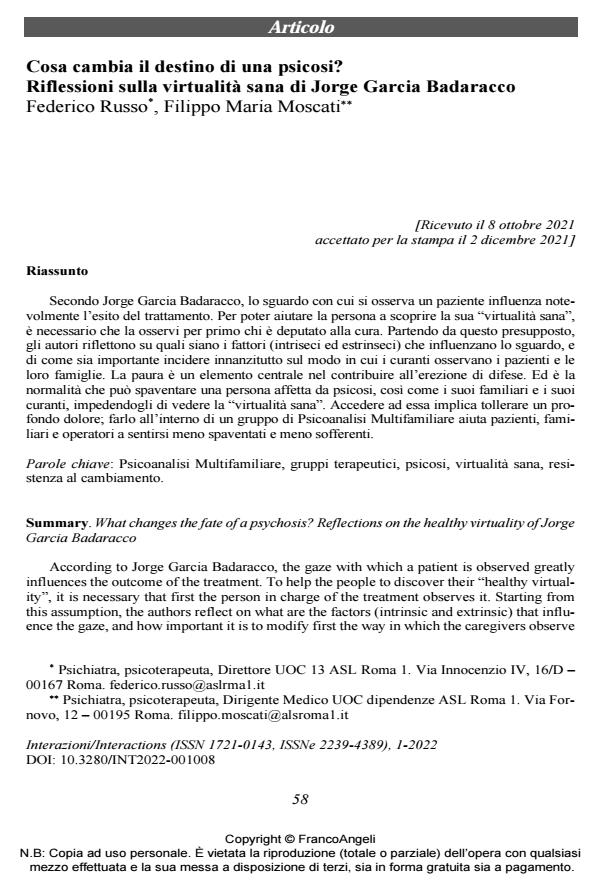Cosa cambia il destino di una psicosi? Riflessioni sulla virtualità sana di Jorge Garcia Badaracco
Journal title INTERAZIONI
Author/s Federico Russo, Filippo Maria Moscati
Publishing Year 2022 Issue 2022/1
Language Italian Pages 10 P. 58-67 File size 155 KB
DOI 10.3280/INT2022-001008
DOI is like a bar code for intellectual property: to have more infomation
click here
Below, you can see the article first page
If you want to buy this article in PDF format, you can do it, following the instructions to buy download credits

FrancoAngeli is member of Publishers International Linking Association, Inc (PILA), a not-for-profit association which run the CrossRef service enabling links to and from online scholarly content.
According to Jorge Garcia Badaracco, the gaze with which a patient is observed greatly in-fluences the outcome of the treatment. To help the people to discover their "healthy virtuality", it is necessary that first the person in charge of the treatment observes it. Starting from this assumption, the authors reflect on what are the factors (intrinsic and extrinsic) that influence the gaze, and how important it is to modify first the way in which the caregivers observe pa-tients and their families. Fear is a core element in contributing to the raise of defenses. It is the normality that can frighten a person suffering from psychosis, as well as his family and his caregivers, preventing him/her from seeing his/her "healthy virtuality". Have access to it implies tolerating deep pain; doing it within a multi-family psychoanalysis group help family members and practitioners to feel less frightened and less suffering.
Keywords: multifamily psychoanalysis groups, therapeutic groups, psychosis, healthy virtuality, resistance to change.
Federico Russo, Filippo Maria Moscati, Cosa cambia il destino di una psicosi? Riflessioni sulla virtualità sana di Jorge Garcia Badaracco in "INTERAZIONI" 1/2022, pp 58-67, DOI: 10.3280/INT2022-001008